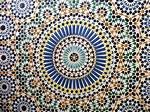WHAT?!
Well now I am aware it doesn’t seem so “profoundly” confusing. Ma (2010) outlines this concept as a fundamental principle in the learning and teaching of mathematics.
‘Fundamental understanding of the whole mathematics curriculum and no limitation to the knowledge that should be taught in a certain grade. The ability to exploit an opportunity to review crucial concepts that students have studied previously and know what students are going to learn later and building the foundations for this future learning.” (Ma, 2010, Pg. 121)
So with this in mind… Longitudinal coherence in more basic terms is actually the ability to build on and use previous learning to acquire more advanced understanding of progressive mathematical concepts. For example…
Subtraction -> division -> fractions = rates, percentages, algebra and decimals.
By building on previous learning we can cement and progress a child’s understanding in more complex areas. This progressive learning strategy is supported highly by myself, my previous post where I discussed my experiences at school… I asked those “why” questions and got a “because you do” answer. This would not be the case if I had those links and the explanations of WHY! Progression and depth are also two principles supported by CfE.
Depth
“There should be opportunities for children to develop their full capacity for different types of thinking and learning. As they progress, they should develop and apply increasing intellectual rigour, drawing different strands of learning together, and exploring and achieving more advanced levels of understanding” (Scottish Government, 2009).
Progression
“Each stage should build upon earlier knowledge and achievements. Children should be able to progress at a rate which meets their needs and aptitudes, and keep options open so that routes are not closed off too early” (Scottish Government, 2009).
I feel that these principles link closely with Ma’s concept of Longitudinal coherence and support the framework of CfE. This depth and progressive approach should in theory cement a life long understanding which can be used in other areas of the curriculum and in upper school, such as Science, Technology, Finance and Business.
















